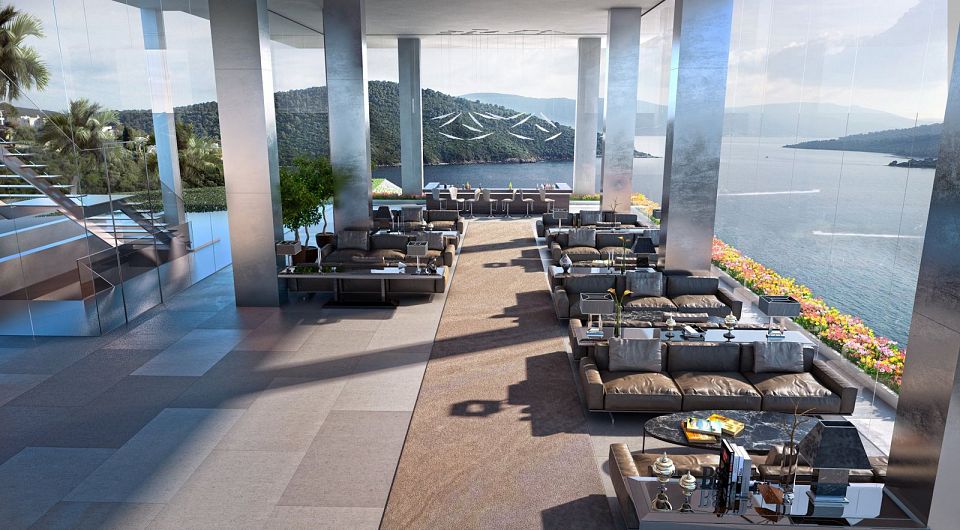New Luxury Travel Trends... Millennials, BeMe, #generations par Isabel Montigny, Collège Lasalle
Luxury travel has a new look, a new size, and a new vocabulary. It rhymes with Millennials, (50% of the luxury international travel), and tells about their values regarding sustainability, social responsibility, wellbeing and above all, that true travel luxury is the access to unique experiences. New luxury travel now rhymes with authenticity more than with opulence. It is B to Me business that replaces celebrity with celebration. There is a new win-win-solution generation out there, and the travel industry has to prove that they are hand-in-hand with the social development of local communities and that their trip is bringing economic growth to all. With this changing of values, experience has replaced ownership.

The numbers do not lie and show that developed countries have spent and will spend more than US$3,839 billion on services between 2018 and 2030, in comparison to US$503 million spend on goods. This is because they follow their values when it comes time to choosing suppliers. A Cone Communications study on corporate social responsibility which shows that 87% of the American population choose to buy from a certain company because they defend a cause they advocate, and they don’t buy because the opposite also applies. With access to the world in the palm of their hands, they research, compare and get to choose. Hence, they value authenticity, transparency and sustainability.
To comprehend new luxury travel, one needs to understand the new clients: The wealthy Millennials and for the coming wealthy Generation Z. It is to be aware that not only the tourism industry has to fulfill their needs, but also needs to communicate in their particular language. It is the LOL and # generations, and with them the influence of likes and dislikes. Thus, companies need to be up to date regarding technology. Hotel websites, travel agencies, and other travel suppliers must be efficient, user-friendly, and above all, engaging.
The luxury travel market is continually growing, and the predictions say that luxury tourism will grow 6.2% in the next 10 years compared to 4.8% of the general tourism sector. One luxury travel trend is Wellness, with a growth of 25 % a year of Solo Travelers (women) according to WWI - World Wellness Institut. Now it is more about how you feel and not only how you look, physically and mentally, that matters more and more. This shapes a new look for luxury travel. Hotels develop new concepts integrating spas, build with sustainable eco-friendly materials, integrating nature and natural light. Restaurants offer organic, local products and healthy menus. Also, a new size: Small luxury boutique hotels has emerged around the globe, showing a balance between technology and handmade shoppable products. They match the definition of luxury with its unique location, personalized customer service and offer products with special emphasis to local artists and cultures.
These new clients create space for innovation so travel agencies became boutique travel designers and compose a unique travel experience for each client. The company Niquesa Travel is an example of this new travel concept. Through their website, they sell Feelings, not itineraries. Wealthy clients can choose “Feelings à la Carte”: Love, Share, Dare, Learn, Play and more. It is not where one wants to go it is all about what one wants to feel.
Another component of the change is China, which is a major player in the industry, with 1.42 bi inhabitants, 150 million international departures, and GDP growth rates of 10% in 2010 and 7,3% in 2018, will soon become an economy larger than the US, which had a growth rate of only 1.5% in 2018. The Chinese economic growth will also impact the travel luxury industry, and it is important to take into consideration what their preferences are, which also follows macro tendencies of more and unique experiences, wellness growth, and use of technology on the different phases of travel. For this last aspect, the companies need to know the Chinese social networking sites like Wechat, Weibo and QQ. and of course learn their languages.
The travel industry will have to deal with the growth of traveler demand in a planet with limited resources and find sustainable solutions that meet the new demands and expectations of wealthy generations.
By Isabel Montigny, College Lasalle
Bibliography
Wellness Tourism Association, Five Wellness Trends for 2019. Retrieved from wellnesstourismassociation.org/five-wellness-travel-trends-2019/, [Accessed 19 Sep. 2019]
Global Wellness Summit, (2019), Uncovering Wellness on Wealth, Retrieved from globalwellnesssummit.com/2019-global-wellness-trends/china-uncovering-wealth-in-wellness/#_ednref1, [Accessed 21Sep. 2019]
Euromonitor International (2019), Understanding The social economic drivers of Megatrends. Retrieved from: go.euromonitor.com/rs/805-KOK-719/images/sbDriversMegatrends-v0.2.pdf?, [Accessed 23 Sep. 2019].
United Nations Statistics Division, China. Retrieved from http://data.un.org/en/iso/cn.html, [Accessed 25 Sep. 2019]
United Nations Statistics Division, United States of America. Retrieved from http://data.un.org/en/iso/us.html, [Accessed 25 Sep. 2019]
ITB Berlin, What are the trends to look out for, Retrieved from itb-berlin.de/media/itb/itb_dl_all/itb_presse_all/ITB_World_Travel_Trends_2018_2019.pdf, [Accessed 25 Sep. 2019]

Les plus commentés